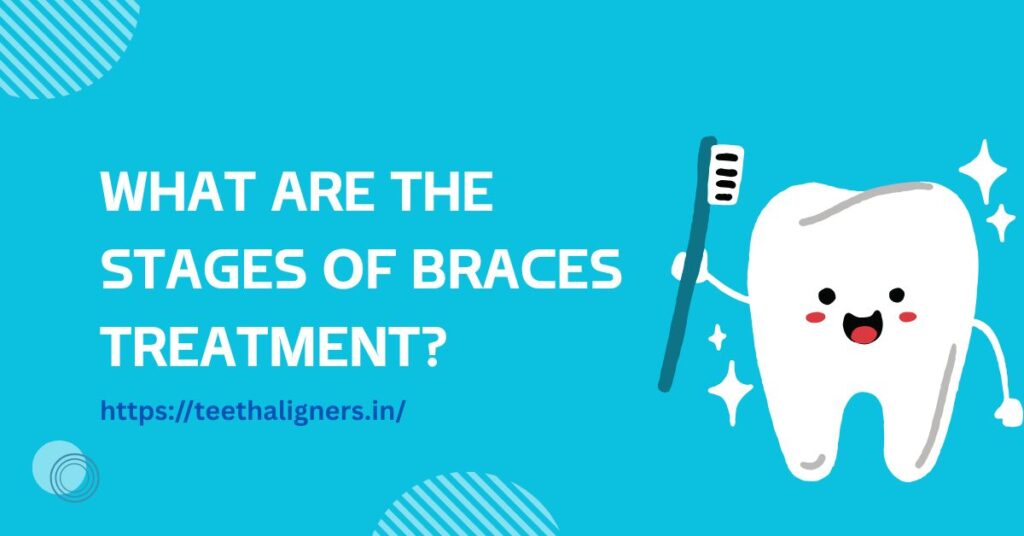Have you ever looked in the mirror, noticed your teeth, and wondered how orthodontists manage to straighten them so perfectly? At first glance, it may seem like magic, but in reality, the process is built on science, planning, and patience.
Orthodontic treatment is not something that happens overnight. Instead, it is a step-by-step journey that carefully guides your teeth into their ideal positions.
Each stage of treatment has a purpose, from the first time you sit in the orthodontist’s chair to the moment your appliance is removed and replaced with a retainer.
This journey can take months or even years, but understanding each step makes it easier to follow and less overwhelming. For patients in South Delhi and other parts of India, knowing what lies ahead brings confidence and excitement.
In this article, we’ll walk through the stages of braces treatment in simple, easy-to-follow language. By the end, you’ll see how every appointment and adjustment contributes to the goal of a healthier, straighter, and brighter smile.
Table of Contents
ToggleThe Initial Consultation
The first stage in orthodontic treatment is the consultation. This is when you meet your orthodontist for the first time to discuss your concerns and goals. The orthodontist examines your teeth, gums, and jaw carefully.
They often take X-rays to see the roots of your teeth and the positioning of the jawbone. Digital scans or impressions are also taken so the orthodontist has an accurate 3D model of your teeth.
This stage is about more than just looking at your smile,it’s about building a full picture of your dental health. If you’re based in South Delhi, you’ll find orthodontists using modern tools like digital scanners to make the process more comfortable and accurate.
During this visit, the orthodontist will also explain possible treatment options, such as braces or advanced clear systems like Crystal aligner, answer your questions, and discuss how long the process may take.
Many people find this stage reassuring because it transforms nervous curiosity into a clear plan of action. Instead of guessing how long treatment will take, you walk away with a roadmap of your smile journey.
Treatment Planning
After your records are collected, the orthodontist creates a detailed plan. This stage is like setting the blueprint for your new smile. The plan considers the type of bite you have, whether you have crowding or gaps, and how severe your misalignment is.
For example, someone with crowded teeth may need a different approach than someone with a large gap. Likewise, an underbite requires a different correction method than an overbite.
These differences are why treatment plans are customized for each person.During this stage, you’ll also get an idea of how long treatment may last.
While the average time is between 18 months and 3 years, the exact length depends on the complexity of your case. This is the stage where both you and your orthodontist set clear expectations and agree on the goals of the treatment.
Getting Braces Placed
Preparing the Teeth
Once your plan is finalized, the next step is placement day. This is often one of the most exciting days for patients because it marks the real beginning of the transformation. Before the appliance goes on, your teeth are cleaned thoroughly. This cleaning helps the brackets stick properly to the surface of the teeth.
In some cases, small separators may be placed between the molars a week before the appliance is attached. These tiny elastic rings create space for metal bands that will later be fitted around the back teeth. Though small, this step makes the actual placement process much smoother.
Attaching Brackets and Wires
The brackets, which are the small square parts, are bonded onto each tooth using a special dental adhesive. Once all brackets are in place, the orthodontist threads a wire through them. The wire is then held in place with tiny rubber bands, often in fun colors that patients, especially younger ones, can choose themselves.
As soon as the wire is in position, gentle pressure begins moving your teeth. Although you may not notice immediate changes in the mirror, the movement has already started. This is the moment when treatment officially begins.
Adjustments and Progress
Regular Tightening Appointments
After your appliance is placed, you’ll visit the orthodontist regularly,usually every four to six weeks. These visits are important because the wire may need to be tightened or replaced to keep the teeth moving in the right direction.
The adjustments are small but powerful. Each one brings your teeth closer to their ideal alignment. Without these appointments, the treatment would stall, which is why staying consistent with checkups is so important.
Common Experiences After Adjustments
Most patients notice some soreness or pressure for a few days after adjustments. This happens because the teeth are being nudged into new positions. While it can feel uncomfortable at first, the discomfort is temporary and usually fades within a few days.
To ease this stage, many orthodontists recommend eating softer foods such as mashed potatoes, yogurt, or pasta. Orthodontic wax can also help reduce irritation from brackets rubbing against the inside of your cheeks. Over time, as you get used to the adjustments, the discomfort becomes much easier to manage.

Oral Care During Treatment
Brushing and Flossing with Braces
Maintaining oral hygiene becomes even more important during orthodontic treatment. Wires and brackets create small spaces where food and plaque can easily be collected.
If not cleaned properly, this can lead to cavities, gum problems, or staining.Orthodontists often recommend using interdental brushes, floss threaders, or water flossers.
These tools make it easier to reach spots that a regular toothbrush might miss. Brushing twice a day and flossing at least once daily helps keep your teeth and gums healthy throughout the process.
Diet Considerations
Your diet also plays a big role in protecting your appliance. Sticky foods like caramel or chewing gum can pull brackets off, while hard foods such as nuts or popcorn can break wires. Crunchy raw vegetables should be cut into small, bite-sized pieces instead of being eaten whole.
Instead of risky snacks, patients often enjoy softer foods like bananas, rice, pasta, or yogurt. These foods are gentle on your teeth and your appliances, making daily eating less stressful.
Mid-Treatment Monitoring
As the months go by, your orthodontist continues to monitor progress closely. These checkups allow the doctor to see if teeth are moving as planned or if any adjustments are needed.
Sometimes, rubber bands are added to help correct bite issues. Other times, wires are changed to increase or decrease pressure.On average, patients wear braces for 18 to 24 months.
Some finish earlier if their teeth respond quickly, while others need extra time. Everyone’s timeline is different, but the regular monitoring makes sure your smile is moving steadily in the right direction.
The Removal Stage
Taking Off Brackets and Wires
After months or years of treatment, the day finally arrives when your appliance can be removed. Many patients look forward to this stage with excitement, and for good reason.
The removal process is quick and painless. The orthodontist gently takes off the brackets and wires, then polishes the surface of the teeth to remove any leftover adhesive.
The First Look at the New Smile
When patients see their smile for the first time after removal, the reaction is often emotional. Teeth feel smooth and look bright without the brackets and wires. The new alignment can feel strange at first, but it is also incredibly rewarding.
Many people describe this day as life-changing because it marks the end of one journey and the beginning of a new chapter filled with confidence.
The Role of Retainers
Why Retainers Are Needed
Even though treatment is complete, teeth naturally try to shift back to their old positions. Retainers are used to prevent this. They hold the teeth in place until the surrounding bone and gums adjust to the new alignment. Without them, the results of years of treatment could quickly fade.
Wearing Retainers Consistently
Retainers come in two main types: removable and fixed. Removable retainers can be taken out for meals or cleaning, while fixed retainers are bonded behind the teeth. Your orthodontist will guide you on how long and how often you need to wear them.
In most cases, retainers are worn full-time for a few months and then only at night. Being consistent with this step is vital for keeping your new smile stable and long-lasting.
Long-Term Care After Braces
The orthodontic journey does not stop once retainers are in place. Long-term care is just as important. This includes regular dental checkups, keeping up with good brushing and flossing habits, and wearing retainers exactly as recommended.
Patients who commit to these steps often enjoy straight teeth for life.Clinics such as Teeth Aligners in India also provide long-term guidance, offering support to patients even after treatment is complete.
Whether it’s checking the fit of retainers or addressing cosmetic concerns, ongoing care ensures your smile remains healthy and aligned.
Conclusion
Orthodontic treatment is a journey made up of many stages, each with its own role in moving teeth safely and steadily into the right position.
From the first consultation where records are taken, to the planning, placement, adjustments, and eventual removal of the appliance, every step contributes to the final result.
Retainers and long-term care then take over to keep the smile stable for years to come.While the process takes patience and dedication, the outcome,a confident, healthy smile,is worth every visit and adjustment.
With guidance from skilled orthodontists and consistent care at home, anyone considering treatment can look forward to results that last a lifetime.

